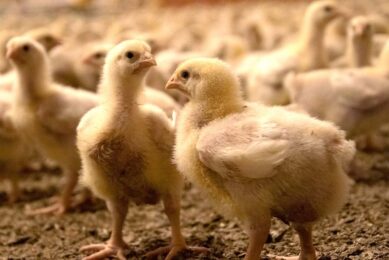India’s poultry farmers face dry monsoon season
The slow onset of the rainy season in India is delaying the planting of corn, the other major poultry feed item, putting more pressure on an industry already facing high feed costs, the WSJ India reports.
An unusually dry rainy season is ruffling the feathers of India’s poultry industry, which already was alarmed by the soaring price of chicken feed – its most significant cost.
The industry was hoping for some relief after trying to cope with a sharp rise in the price of soymeal because of strong export demand. Now, scanty rainfall in June has hit the planting of corn, the other major feed item.
The hot weather also means that fewer people are eating poultry meat — usually cooked with liberal dashes of cooking oil and spices — leaving them no room to increase prices.
“We are hit by the delayed monsoon in two ways. It has decreased consumption of poultry and eggs and increased prices of feed,” said D. Sudhakar, president of the Andhra Pradesh Poultry Federation. The southern state accounts for a third of the country’s poultry production.
As a result, small and marginal poultry farmers are facing closure.
Mr. Sudhakar said the cost of corn has increased to 14,000 rupees (€204.9) per tonne from 11,500 rupees (€168.3) per tonne in April.
A spell of dry weather in the U.S. around the same time means that the corn production even in that country has been affected, driving up international prices and putting further pressure on domestic rates.
“The impact is global. Cost of production has risen very high,” said Jagbir Singh, former president of the Poultry Federation of India.
The price of soymeal, the other main feed item, has more than doubled to about 40,000 rupees a tonne (€585.4 per tonne) since April.
The jump in domestic soymeal feed prices happened, somewhat bizarrely, on strong export demand from Iran, which has been stocking up on agricultural items after being hit by western sanctions aimed at curbing its nuclear ambitions.
So strong has been the demand from the Middle East nation that it has been paying a premium over international rates of US$20 a ton on Indian soymeal, outrunning all rivals to emerge as the biggest buyer in recent months.
Soymeal traders are happy but the poultry industry has sought curbs on shipments — an unlikely prospect as the government is keen to boost exports to Iran at a time when it’s trying to boost scratchy export growth.
All this has put at stake an industry that has 220 million egg-laying birds (as opposed to broilers) that produce 20 million eggs every day. It employs 5 million people and ranks as the fourth-largest egg producer in the world, says Mr. Sudhakar.
“We have requested the government to allocate us wheat and rice that are damaged and not fit for human consumption,” he said.
The government has plenty of foodgrain stocks. It remains to be seen whether it will scatter some of them to the poultry industry or prefers to save its stocks for a rainy day.
Source: WSJ India blog
Join 31,000+ subscribers
Subscribe to our newsletter to stay updated about all the need-to-know content in the poultry sector, three times a week. Beheer
Beheer








 WP Admin
WP Admin  Bewerk bericht
Bewerk bericht